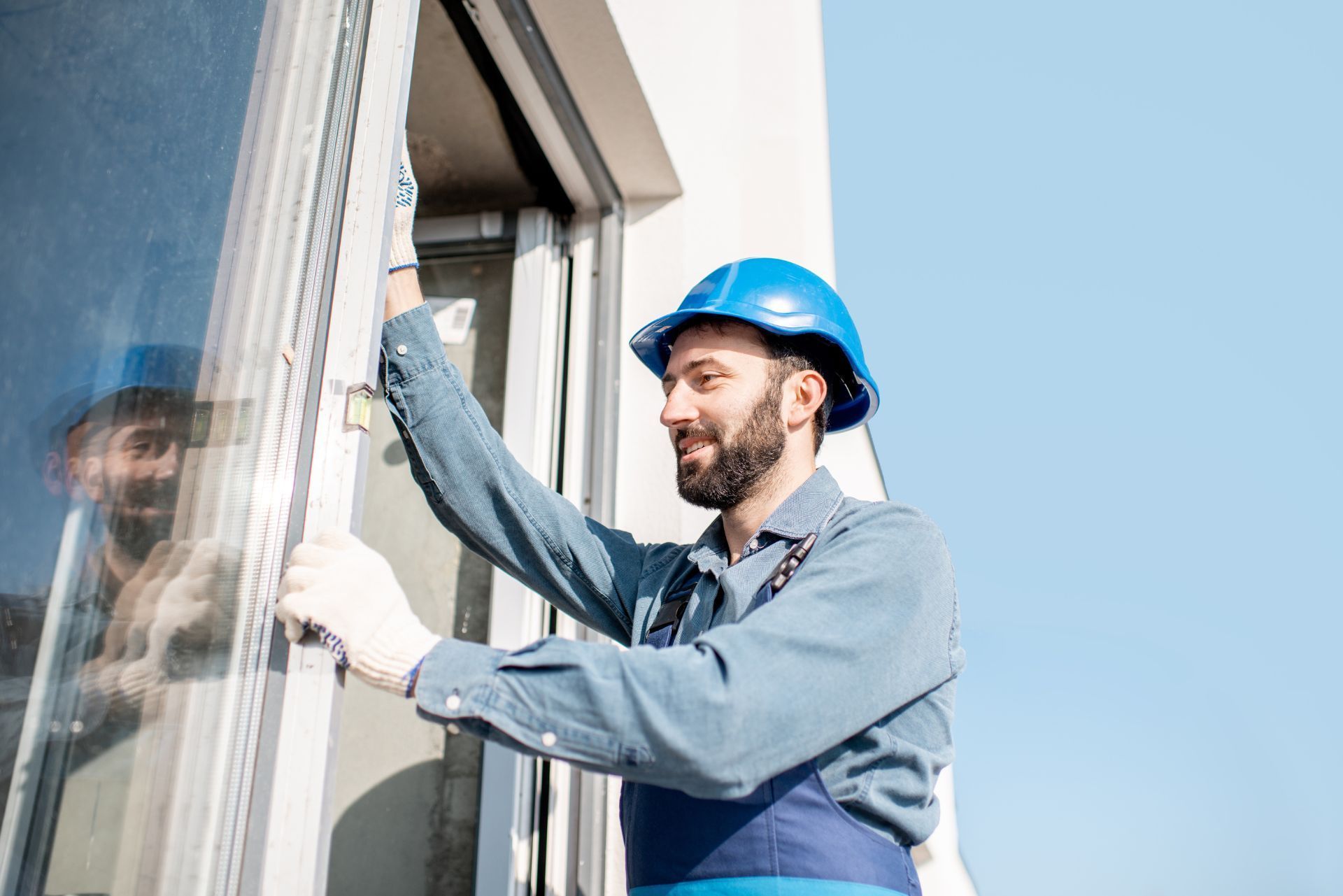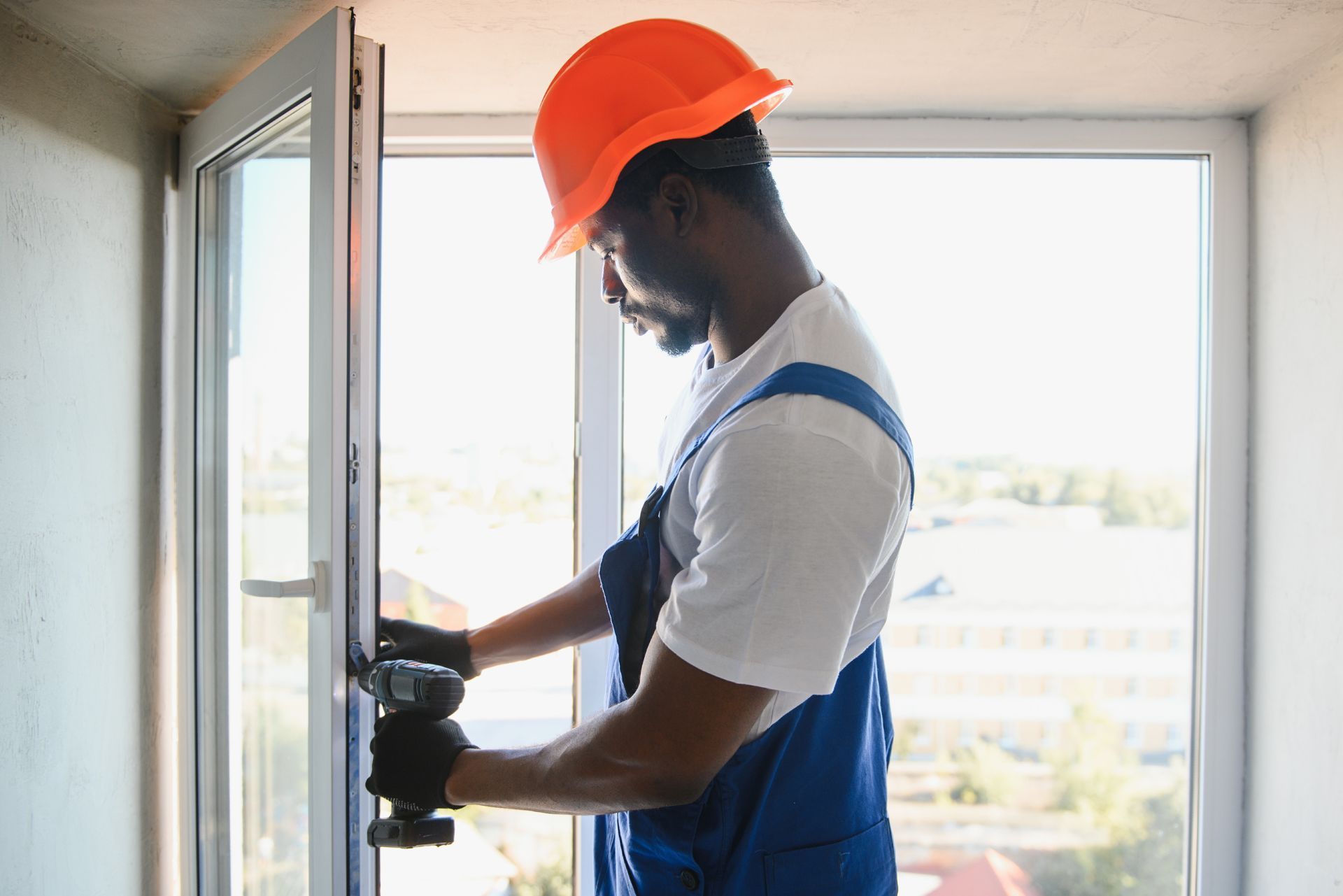Texas Window & Door Installer Insurance

See How We're Different
or call us: (855) 359-9324
Top 3 Recommended Policies
Index
Understanding the Texas Insurance Market Landscape
Why Window & Door Installers Need Specialized Insurance
Climate Risks and Their Influence on Insurance for Installers
Cost Considerations: What Does Installer Insurance Typically Cost in Texas?
Choosing the Right Insurance Provider in Texas
Conclusion: Protecting Your Business in a Challenging Market
Contact Us
For window and door installers in Texas, securing the right insurance coverage is not just a regulatory formality—it’s a crucial safeguard against the unique risks of the industry. With Texas experiencing a surge in natural disasters and a complex
insurance market, understanding the nuances of installer insurance is more important than ever. This comprehensive guide explores what window and door installers need to know about insurance in Texas, highlighting key industry trends, cost factors, and practical tips to protect your business.
Understanding the Texas Insurance Market Landscape
The Texas property and casualty insurance market is one of the largest in the United States, with direct written premiums reaching a staggering $83.1 billion in 2024. Personal auto insurance leads the market, but homeowners and contractors’ insurance remain significant segments. For window and door installers, this means navigating a highly competitive yet volatile insurance environment.
Texas faces some of the highest home insurance rates in the nation, driven by a complex mix of natural catastrophe exposures. According to the Insurance Information Institute, Texas ranks as the sixth-least-affordable state for homeowners insurance. This affordability challenge extends to contractors’ insurance, impacting premiums for window and door installers who work in residential and commercial settings.
Moreover, the state’s insurance market has seen significant shifts recently, with four insurance companies exiting the Texas market in 2024 alone, leaving over 10,000 homeowners without coverage. This contraction affects the availability and cost of insurance products for contractors as well, increasing the importance of finding reliable and comprehensive coverage.
The landscape is further complicated by the increasing frequency and severity of weather-related events, such as hurricanes and severe storms, which have become more common in recent years. These events not only lead to higher claims but also foster a more cautious approach from insurers, who may impose stricter underwriting guidelines or raise premiums to mitigate their risks. For window and door installers, this means that understanding the implications of these weather patterns on insurance policies is crucial, as it can directly impact their business operations and project costs.
In addition to natural disasters, regulatory changes in Texas can also influence the insurance market dynamics. The Texas Department of Insurance regularly reviews and adjusts regulations that govern how insurance companies operate, which can lead to fluctuations in policy availability and pricing. Contractors must stay informed about these changes, as they can affect everything from liability coverage to workers' compensation rates. Engaging with industry associations and attending workshops can provide valuable insights into navigating these regulatory shifts, ensuring that window and door installers remain compliant while also securing the best possible insurance solutions for their businesses.

Why Window & Door Installers Need Specialized Insurance
Window and door installation involves physical labor, working at heights, handling heavy materials, and operating power tools—all of which carry inherent risks. Specialized insurance policies for installers typically include general liability, workers’ compensation, and equipment coverage, tailored to the specific hazards of the trade.
General liability insurance protects installers from third-party claims of bodily injury or property damage caused during installation. For example, if a window falls and damages a client’s property or injures a passerby, liability coverage helps cover legal and medical expenses. This type of insurance not only safeguards the installer’s finances but also enhances their reputation, as clients are more likely to trust professionals who are adequately insured.
Workers’ compensation is equally critical, especially in Texas where workplace injuries can lead to costly medical bills and lost income. This insurance ensures that injured employees receive prompt medical care and wage replacement, while also protecting the business from lawsuits related to workplace injuries. Moreover, having workers’ compensation can improve employee morale, as workers feel more secure knowing they are covered in case of an accident.
Impact of Rising Material Costs on Insurance
The cost of materials used in window and door installation has increased significantly in recent years. Wholesale prices for wood doors and windows rose by 49% from January 2020 to January 2024, according to ConsumerAffairs. This inflation not only affects project budgets but also influences insurance premiums. As prices rise, installers may find themselves needing to adjust their pricing structures to maintain profitability, which can further complicate their relationships with clients.
Higher material costs mean that the potential replacement value in case of damage or theft is greater, prompting insurers to adjust premiums accordingly. Installers should ensure their insurance policies reflect the current value of their tools, equipment, and materials to avoid underinsurance. Additionally, as the market fluctuates, installers might benefit from regularly reviewing their policies with an insurance agent to identify any gaps in coverage or opportunities for cost savings. Keeping abreast of industry trends can also help installers anticipate changes in material costs and adjust their business strategies accordingly, ensuring they remain competitive while adequately protecting their assets.
Climate Risks and Their Influence on Insurance for Installers
Texas is no stranger to extreme weather. Between 2019 and 2023, the state experienced an average of 11 billion-dollar weather events annually, with 16 such events recorded in 2023 alone, as reported by the Texas Consumer Association. These events include hurricanes, tornadoes, floods, and hailstorms, all of which pose significant risks to construction and installation businesses.
Steven Rothstein, Managing Director of the Ceres Accelerator for Sustainable Capital Markets, aptly describes the insurance industry as “the canary in the coal mine for the climate crisis we’re facing.” For window and door installers, this means that insurance providers are increasingly factoring climate risks into their underwriting processes, often resulting in higher premiums and stricter coverage terms.
Installers working in high-risk areas may face challenges securing affordable insurance, and it’s essential to work with insurers who understand the local climate risks and can offer tailored solutions. Investing in quality materials and installation practices that enhance storm resistance can also help mitigate risks and potentially lower insurance costs.
Moreover, the impact of climate change is not only limited to the frequency of extreme weather events but also extends to the long-term viability of certain construction practices. For instance, traditional building materials may not withstand the increased intensity of storms, leading to more frequent repairs and replacements. This reality necessitates a shift towards innovative materials and techniques that can better endure the changing climate. As a result, installers are encouraged to stay informed about advancements in weather-resistant technologies and to incorporate these into their offerings, thereby enhancing their competitive edge in a challenging market.
Additionally, the evolving landscape of climate risk is prompting many installers to engage in proactive risk management strategies. This includes conducting thorough risk assessments to identify vulnerabilities in their projects and implementing measures to address them before they escalate. By fostering a culture of preparedness, installers not only protect their businesses but also reassure clients that they are making informed decisions in an uncertain climate. Such diligence can lead to better relationships with insurers, as companies demonstrating a commitment to risk reduction may find themselves rewarded with more favorable policy terms and conditions.

Cost Considerations: What Does Installer Insurance Typically Cost in Texas?
The cost of insurance for window and door installers in Texas varies widely depending on factors such as business size, coverage limits, claims history, and geographic location. However, it’s important to note that Texas homeowners insurance rates have surged by an average of 28% in 2023, nearly double the national average increase of 15.5%, according to Community Impact. This trend often correlates with rising premiums for contractors’ insurance as well.
In 2025, the average cost of home insurance in Texas was around $6,000, almost double the national average of $3,200. While contractor insurance is not the same as homeowners insurance, the underlying risk factors and market conditions influencing these rates overlap. Factors such as severe weather events, including hurricanes and tornadoes, contribute to the overall risk landscape, prompting insurers to adjust their pricing models accordingly. Additionally, the growing trend of litigation in the construction industry has led to increased claims, further pushing up the cost of insurance for installers.
Window and door installers should budget for insurance premiums that reflect these market realities. Obtaining multiple quotes and working with an insurance broker familiar with the Texas market can help find competitive rates without sacrificing coverage quality. It’s also wise for installers to consider the specific types of coverage that are most relevant to their operations, such as workers' compensation and equipment insurance, which can protect against unexpected costs associated with accidents or equipment failure.
Tips for Managing Insurance Costs
To manage insurance expenses effectively, installers can take several proactive steps:
- Maintain a strong safety record to reduce claims and qualify for lower premiums.
- Invest in employee training focused on safe installation techniques and equipment handling.
- Bundle different insurance policies, such as general liability and commercial auto, to receive discounts.
- Regularly review and update coverage limits to ensure adequate protection without overpaying.
Additionally, engaging in risk management practices can significantly impact insurance costs. For instance, conducting regular safety audits and implementing rigorous safety protocols can not only enhance workplace safety but also demonstrate to insurers that the business is committed to reducing risk. Furthermore, participating in industry associations or training programs can provide valuable insights and resources that help installers stay ahead of best practices in safety and insurance management.
Another effective strategy is to maintain clear communication with your insurance provider. By discussing your business operations and any changes that may affect your risk profile, you can ensure that your coverage remains relevant and adequately reflects your current needs. This proactive approach can also help identify potential discounts or coverage options that may not have been considered initially, ultimately leading to better financial management of insurance costs.
Choosing the Right Insurance Provider in Texas
Given the volatility of the Texas insurance market, selecting a reliable provider is critical. Some insurers have exited the Texas market recently, which can limit options and increase premiums. It’s advisable to choose companies with a strong presence in Texas and a track record of stability.
Look for insurers who specialize in contractor insurance and understand the specific risks associated with window and door installation. Reading customer reviews, checking financial ratings, and consulting industry associations can provide valuable insights.
Additionally, some insurance companies offer risk management resources and support services, which can be invaluable for small and medium-sized installer businesses aiming to reduce claims and improve safety.
When evaluating potential insurance providers, consider their claims process as well. A streamlined and efficient claims process can make a significant difference when you need to file a claim. Look for insurers that provide online claim filing options and have a reputation for quick response times. This can minimize downtime and help you get back to business faster after an incident. Furthermore, understanding the policy details, including deductibles and coverage limits, is essential to ensure that you are adequately protected without overpaying for unnecessary coverage.
Networking with other contractors in your area can also yield recommendations for trustworthy insurance providers. Many local trade associations host events where you can connect with peers and share experiences regarding insurance providers. These firsthand accounts can help you gauge the reliability and customer service of different insurers, giving you a clearer picture of who might best meet your needs. Additionally, consider seeking out insurance agents who specialize in contractor insurance; their expertise can guide you through the nuances of coverage options tailored specifically for your business. By taking these steps, you can make a more informed decision that aligns with your operational needs and risk management strategies.
Conclusion: Protecting Your Business in a Challenging Market
Window and door installers in Texas operate in a challenging insurance landscape shaped by rising costs, climate risks, and market instability. Understanding the nuances of installer insurance—from coverage types to cost drivers—is essential for protecting your business and ensuring long-term success.
By staying informed about market trends, investing in safety and quality, and partnering with knowledgeable insurance providers, installers can navigate these challenges effectively. For more detailed insights on the Texas insurance market, the
Insurance Council of Texas offers valuable resources to help contractors stay ahead in this evolving environment.





